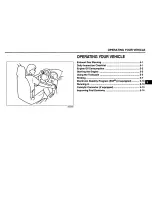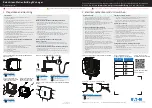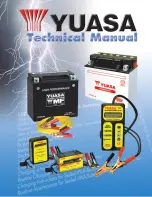
and control in various driving conditions and are
commonly referred to as ESC.
Anti-Lock Brake System (ABS)
This system aids the driver in maintaining ve-
hicle control under adverse braking conditions.
The system controls hydraulic brake pressure
to prevent wheel lockup and help avoid skidding
on slippery surfaces during braking. Refer to
“Anti-Lock Brake System” in “Starting and Op-
erating” for further information.
WARNING!
•
Pumping of the anti-lock brakes will dimin-
ish their effectiveness and may lead to a
collision. Pumping makes the stopping dis-
tance longer. Just press firmly on your
brake pedal when you need to slow down
or stop.
(Continued)
WARNING!
(Continued)
•
The ABS cannot prevent the natural laws
of physics from acting on the vehicle, nor
can it increase braking or steering effi-
ciency beyond that afforded by the condi-
tion of the vehicle brakes and tires or the
traction afforded.
•
The ABS cannot prevent collisions, includ-
ing those resulting from excessive speed
in turns, following another vehicle too
closely, or hydroplaning.
•
The capabilities of an ABS-equipped ve-
hicle must never be exploited in a reckless
or dangerous manner which could jeopar-
dize the user’s safety or the safety of
others.
Traction Control System (TCS)
This system monitors the amount of wheel spin
of each of the driven wheels. If wheel spin is
detected, brake pressure is applied to the slip-
ping wheel(s) and engine power is reduced to
provide enhanced acceleration and stability. A
feature of the TCS system functions similar to a
limited slip differential and controls the wheel
spin across a driven axle. If one wheel on a
driven axle is spinning faster than the other, the
system will apply the brake of the spinning
wheel. This will allow more engine torque to be
applied to the wheel that is not spinning. This
feature remains active even if TCS and ESC are
in either the “Partial Off” or “Full Off” modes.
Refer to “Electronic Stability Control (ESC)” in
this section of this manual.
Brake Assist System (BAS)
The BAS is designed to optimize the vehicle’s
braking capability during emergency braking
maneuvers. The system detects an emergency
braking situation by sensing the rate and
amount of brake application and then applies
optimum pressure to the brakes. This can help
reduce braking distances. The BAS comple-
ments the Anti-Lock Brake System (ABS). Ap-
plying the brakes very quickly results in the best
BAS assistance. To receive the benefit of the
system, you must apply
continuous
braking
pressure during the stopping sequence (do not
“pump” the brakes). Do not reduce brake pedal
pressure unless braking is no longer desired.
173
Содержание Compass
Страница 1: ...Compass O P E R A T I N G I N F O R M A T I O N...
Страница 2: ......
Страница 3: ......
Страница 4: ......
Страница 6: ...2...
Страница 11: ...7...
Страница 64: ...60...
Страница 84: ...80...
Страница 85: ...81...
Страница 86: ...82...
Страница 118: ...114...
Страница 122: ...INSTRUMENT CLUSTER GAS 118...
Страница 123: ...INSTRUMENT CLUSTER DIESEL 119...
Страница 138: ...Compass Variance Map 134...
Страница 149: ...145...
Страница 153: ...Control Setting Suggestions for Various Weather Conditions 149...
Страница 154: ...150...
Страница 204: ...200...
Страница 277: ...SPAIN 290 SWEDEN 290 SWITZERLAND 290 TAIWAN 291 TURKEY 291 UKRAINE 291 UNITED KINGDOM 292 URUGUAY 292 VENEZUELA 292 273...
Страница 297: ...293...
Страница 298: ...294...
Страница 299: ...10 INDEX 295...
Страница 308: ......
Страница 309: ......
Страница 310: ...Chrysler Group LLC 14MK49 126 EE AA Printed in Europe 14...
















































